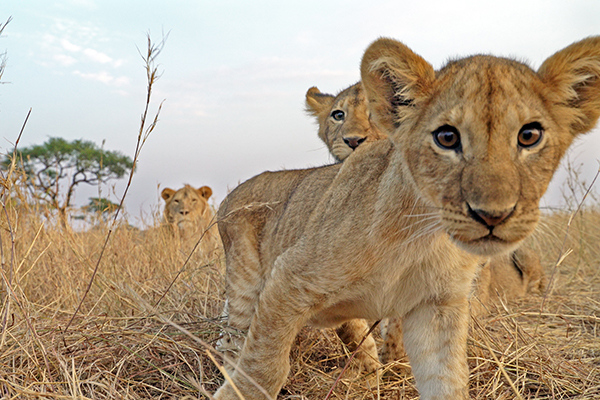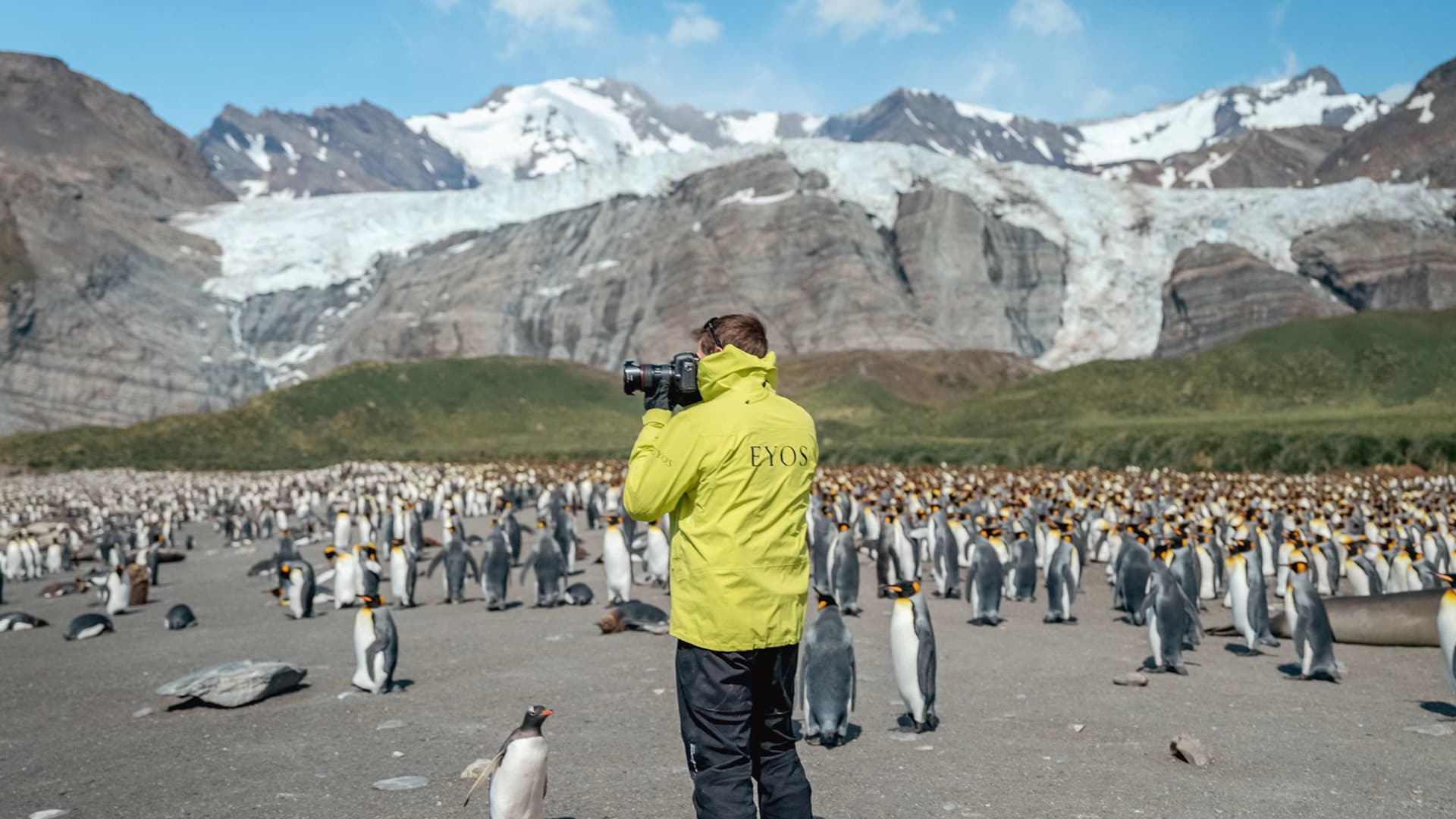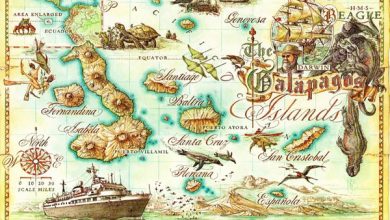Serengeti Expedition History.

The Serengeti Expedition began in the early 20th century. It aimed to explore and document the region’s wildlife and landscapes.
The Serengeti, located in Tanzania, is one of the most renowned wildlife sanctuaries in the world. The region gained fame through early 20th-century expeditions that sought to understand its unique ecosystem. These explorations were pivotal in shaping our knowledge of African wildlife.
The Serengeti hosts a diverse range of species, including the famous annual wildebeest migration. This spectacular event attracts researchers and tourists from around the globe. The findings from these expeditions have contributed significantly to conservation efforts. Today, the Serengeti remains a crucial area for ecological research and wildlife preservation. Its rich history continues to inspire new generations of explorers and conservationists.

Credit: commons.wikimedia.org
Early Explorations
The Serengeti, a vast ecosystem in East Africa, has a rich history of exploration. Early explorers ventured into this magnificent wilderness, bringing back tales of incredible wildlife and landscapes. Their journeys laid the groundwork for modern-day safari tourism and conservation efforts.
First Expeditions
The first recorded expeditions to the Serengeti took place in the late 19th century. These expeditions were often led by European adventurers and scientists. They sought to document the region’s flora and fauna.
One of the earliest expeditions was led by Dr. Oscar Baumann in 1892. He was a German geographer and ethnologist. His team mapped large parts of the Serengeti. They also documented the Maasai people who lived there.
Here are some key details of early expeditions:
| Year | Explorer | Achievements |
|---|---|---|
| 1892 | Dr. Oscar Baumann | Mapped large areas, documented Maasai culture |
| 1896 | Dr. Ludwig Krapf | First to describe Serengeti’s wildlife |
Pioneering Explorers
Several pioneering explorers made significant contributions to understanding the Serengeti. Their detailed observations provided valuable insights into this unique ecosystem.
Dr. Ludwig Krapf, a German missionary, was one of these pioneers. He arrived in East Africa in 1844. His writings included the first descriptions of the Serengeti’s wildlife.
Another notable explorer was Dr. Bernhard Grzimek. He was a German zoologist who arrived in the Serengeti in the 1950s. He produced the famous documentary “Serengeti Shall Not Die”. This film raised global awareness about the need to protect the Serengeti.
- Dr. Ludwig Krapf: First descriptions of wildlife
- Dr. Bernhard Grzimek: Raised global awareness with a documentary
Colonial Influence
The history of the Serengeti is deeply intertwined with colonial influence. European explorers and colonizers left an indelible mark on this vast African landscape. Their activities shaped the region’s history, culture, and ecology.
European Impact
European explorers first arrived in the Serengeti in the 19th century. They documented the rich biodiversity and vast herds of wildlife. Their reports sparked interest among scientists and adventurers. This led to a surge in expeditions to the region.
Colonial governments soon followed these explorers. They established administrative control over the Serengeti. They introduced new laws and regulations. These laws often disrupted traditional land use practices. Local communities faced restrictions on hunting and grazing.
The Europeans also introduced new species to the Serengeti. Some of these species thrived while others caused ecological imbalances. The introduction of diseases like rinderpest had devastating effects on wildlife populations.
Territorial Claims
Colonial powers carved up Africa in the late 19th and early 20th centuries. The Serengeti region was no exception. Germany initially claimed the area as part of German East Africa. They established administrative posts and built infrastructure.
After World War I, control of the Serengeti passed to the British. They incorporated it into the British Mandate of Tanganyika. The British continued to develop the region. They built roads, railways, and settlements.
Colonial territorial claims often ignored the needs of local communities. Boundaries were drawn without regard for ethnic or ecological considerations. This led to conflicts over land use and resource management.
| Colonial Power | Period | Impact |
|---|---|---|
| Germany | Late 19th century – World War I | Established administrative control, built infrastructure |
| Britain | Post-World War I – Mid 20th century | Expanded infrastructure, continued administrative control |
Scientific Discoveries
The Serengeti has been a site of many scientific discoveries. Researchers have unearthed vital information about its unique ecosystem. These findings have advanced our understanding of wildlife and geology.
Wildlife Studies
Wildlife studies in the Serengeti have revealed intriguing animal behaviors. Scientists observe the Great Migration, where millions of wildebeest and zebras travel. This migration is crucial for the ecosystem. It ensures the balance of the food chain.
Researchers have also studied predator-prey relationships. They have discovered how lions and cheetahs hunt. These studies help in understanding the survival strategies of these animals.
- Great Migration: Movement of millions of wildebeests and zebras.
- Predator-Prey Relationships: Hunting strategies of lions and cheetahs.
Geological Surveys
Geological surveys in the Serengeti have uncovered ancient rock formations. These formations tell a story of Earth’s history. Scientists have found fossils that date back millions of years. These fossils provide insights into past life forms and climates.
Researchers have also studied volcanic activity in the region. The Ngorongoro Crater is a result of such activity. It is one of the world’s largest unbroken calderas.
| Geological Feature | Significance |
|---|---|
| Ancient Rock Formations | Evidence of Earth’s history and past climates. |
| Ngorongoro Crater | One of the largest unbroken calderas. |

Credit: www.eyos-expeditions.com
Modern Expeditions
The Serengeti has captivated adventurers and researchers for decades. Modern expeditions blend technology and conservation. This section explores recent advances and efforts.
Conservation Efforts
Modern expeditions focus heavily on conservation efforts. Scientists use GPS tracking to monitor wildlife. This helps in studying migration patterns and animal behavior.
Efforts also include anti-poaching initiatives. Rangers use drones and thermal cameras to protect animals. These technologies have reduced poaching incidents significantly.
Conservationists work with local communities. They educate about the importance of preserving the ecosystem. This collaboration ensures a sustainable future for the Serengeti.
Tourism Development
Tourism in the Serengeti has evolved. Modern expeditions offer eco-friendly safaris. Solar-powered lodges reduce the environmental impact.
Local guides lead these tours. They provide an authentic experience and share their knowledge. This creates jobs and supports the local economy.
The Serengeti also benefits from tourism revenue. Funds go into wildlife conservation and park maintenance. This ensures the park remains a world treasure.
Below is a table summarizing key points:
| Aspect | Details |
|---|---|
| Conservation Technologies | GPS tracking, drones, thermal cameras |
| Community Involvement | Education programs, local ranger support |
| Eco-friendly Tourism | Solar-powered lodges, guided tours |
| Economic Benefits | Job creation, conservation funding |
These efforts ensure the Serengeti’s beauty endures for future generations.

Credit: m.youtube.com
Frequently Asked Questions
What Is The Serengeti’s Historical Significance?
The Serengeti is crucial for its rich biodiversity and ancient human settlements.
Who Discovered The Serengeti?
Western explorers first documented the Serengeti in the early 20th century.
Why Is The Serengeti A Unesco Site?
The Serengeti earned UNESCO status for its exceptional natural beauty and wildlife.
How Did The Serengeti Get Its Name?
The name “Serengeti” comes from the Maasai word “Siringet,” meaning “endless plains. “
Conclusion
Exploring the Serengeti offers a glimpse into a rich history of adventure and discovery. This unique region continues to captivate with its diverse wildlife and stunning landscapes. Whether you’re an avid traveler or a history enthusiast, the Serengeti’s expedition history promises unforgettable experiences.
Plan your visit and be part of this incredible journey.



